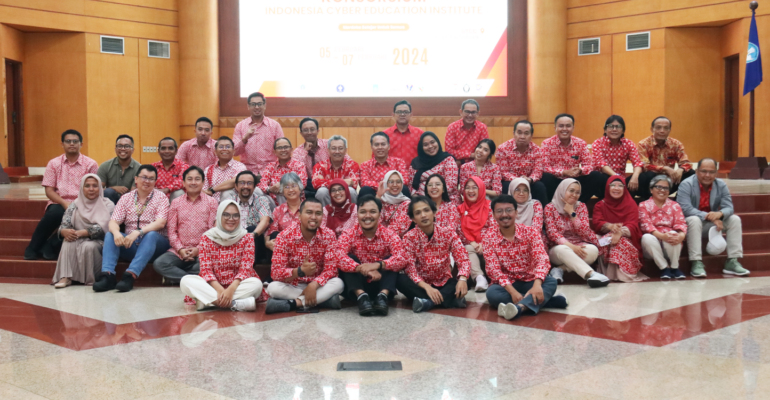Student Access to ICE Institute Increases, IPB University Receives Award

The enthusiasm of IPB University students to access the Indonesia Cyber Education (ICE) Institute is increasing. This was conveyed by the Assistant Director of Technology and Digitalisation, Directorate of Educational Transformation and Learning Technology (DTPTP) IPB University, Dr Kaswanto.
“The data shows that participants from IPB University who attended lectures at the ICE Institute in the odd semester were 1337 students and jumped in the even semester which recorded 2618 participants, namely in batch six stage one, meaning that there was a double jump compared to the previous semester,” said Dr Kaswanto.
He explained, participants from IPB University will continue to grow as registration is still open for batch six phase two which will end on 24 February. In addition, he said IPB University also provides 10 courses that can be accessed at the ICE Institute for students throughout Indonesia who want to take IPB University courses per semester in a self-paced learning method (SLM).
“This extraordinary enthusiasm made IPB University receive an award for the second time as the university that sent the most students to the ICE Institute,” said Dr Kaswanto.
He continued, the award was given by the ICE Institute directly at the ICE Institute Consortium Leadership Coordination Meeting held on 4-7/2 at the Open University Convention Center (UTCC), South Tangerang.
“Through ICE Institute, participants can access quality education while guaranteeing the quality of online learning and distance education. ICE Institute can also make it easier for students to choose the right online course for their career development, this is in line with the ICE Institute tagline, namely Merdeka Belajar Untuk Semua (MBUS),” he said.
ICE Institute is present as an answer in facing the era of the industrial revolution 4.0 which changes the perspective on education. The change in perspective on the concept of education is holistic and no longer partial.
ICE Institute is able to play a role in increasing the expansion of access and equitable quality of education to encourage the Education Participation Rate (APK) to 40 per cent. ICE Institute will also help fulfil the needs of lifelong learners through the provision of quality learning systems and content that can be accessed anytime anywhere and by anyone. (IAAS/RUM)


